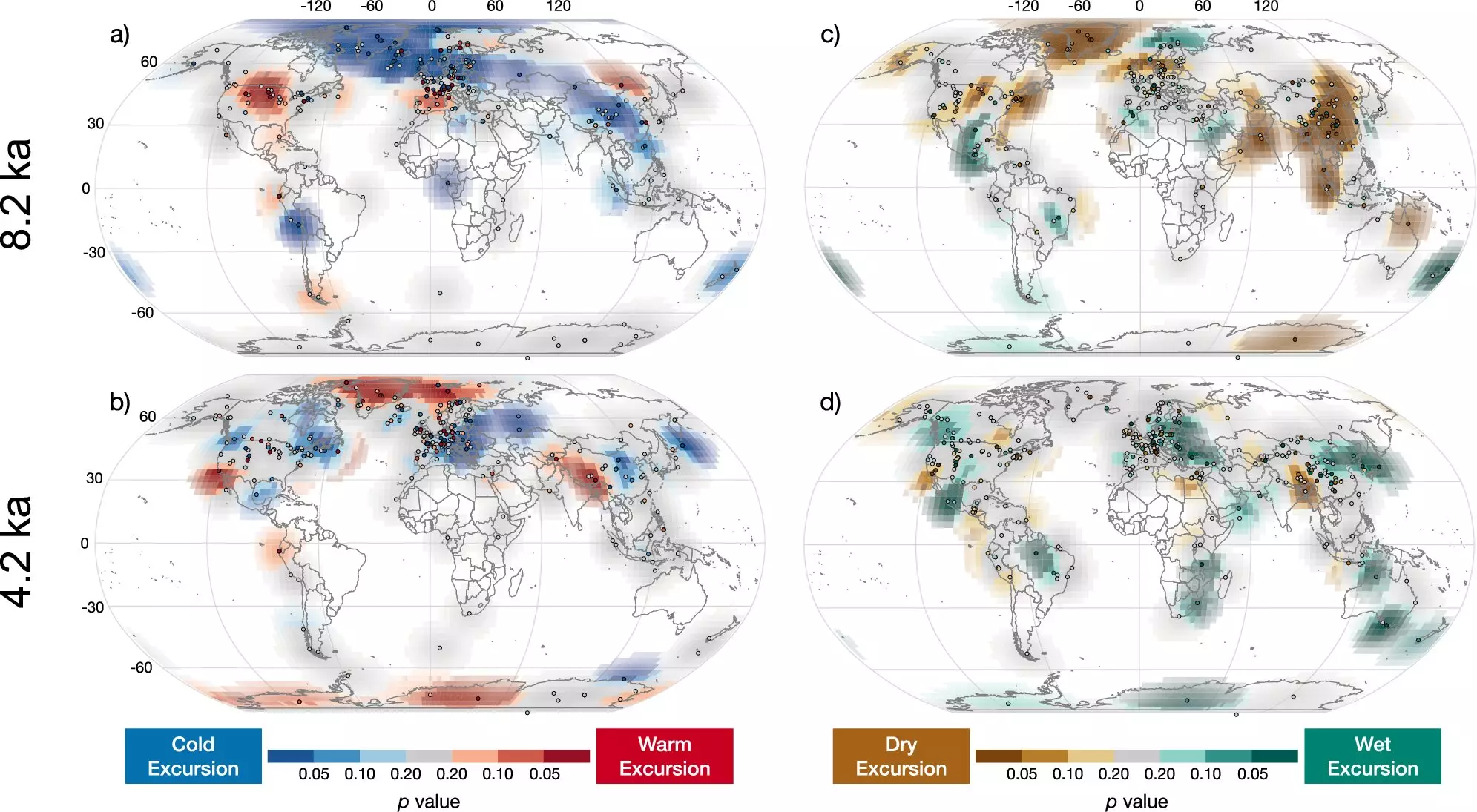The notion of ancient climate disruptions significantly reshaping human civilization has long captivated scientists and historians alike. An event that has been particularly highlighted is the megadrought occurring approximately 4,200 years ago, which is often cited as a turning point that potentially led to the collapse of early societies around the globe. However, recent research emerging from Northern Arizona University (NAU) is challenging this perspective, discussing the nuances of climate change during the Holocene Era—a period that began around 11,700 years ago.
The core theme of the new study published in *Nature Communications* revolves around a critical analysis of historical climate data, aiming to comprehend the true impact of the 4.2 ka megadrought. Previous assumptions posited that this climatic event was monolithic in its consequences, resulting in widespread devastation. Nonetheless, researchers indicate that while the event did indeed occur, its ramifications were not as globally catastrophic as commonly believed. Instead, they highlight that it is one of many climatic fluctuations experienced throughout the Holocene, raising questions about the intricacies of climate change and its localized impacts.
The research team, including faculty, students, and alumni, undertook the ambitious approach of combining their academic efforts to analyze over 1,000 datasets relating to historical climate patterns. According to lead author Nicholas McKay, the initiation of this investigation stemmed from the 2018 designation of the 4.2 ka event as a new geological marker. This categorization pushed researchers to critically examine its validity as a definitive global climatic shift.
One of the standout features of this research project is the innovative methodology developed by the NAU team. Faced with vast amounts of climate data spanning 12,000 years, the researchers constructed a framework that allowed for a more refined detection and assessment of climate events over time. By employing this enhanced analytical approach, they were able to paint a clearer picture that reflects the complexity of climate alterations during the Holocene.
The findings call into question the perception of the 4.2 ka event as a singular, pivotal climatic change. Instead, the data revealed a pattern of smaller, localized climate events, which may have been mistakenly interpreted as the consequences of a singular megadrought. In certain regions, climatic shifts indicative of the 4.2 ka drought were observed, yet they were not ubiquitous and often carried different characteristics wherever they were noted.
Further emphasizing the localized nature of climate change during the Holocene, the study uncovered that significant climatic fluctuations have been commonplace throughout the epoch. Events such as the 8.2 ka event—a period of colder and drier conditions centered around the North Atlantic—as well as shifts in temperature that correspond with major historical events like the Dark Ages Cold Period and the Medieval Climate Anomaly, serve as noteworthy examples.
This abundant evidence suggests that while abrupt changes in climate can occur at a local level, globally coherent climate events are relatively scarce. This underscores the importance of a nuanced approach to understanding how various factors contribute to climatic shifts across different regions and timescales.
The implications of this study extend beyond a reassessment of the historical perspective regarding the 4.2 ka megadrought. It serves as a reminder that understanding past climate behavior is essential for predicting future climate scenarios. McKay expresses a vital differentiation between natural climatic changes occurring in ancient periods and the accelerated changes we face today due to human activity. The contrasting nature of these changes is crucial for informing policy and climate model projections moving forward.
Perhaps one of the most enlightening aspects of this research lies in the collaborative approach adopted by the NAU team. By involving students in this large-scale investigation, they fostered an educational environment that emphasized real-world scientific inquiry. Co-author Leah Marshall highlights the unique experience of engaging with a vast dataset, which provides invaluable insights into how synthesis studies are designed—a fundamental skill for budding scientists.
The ongoing research at NAU effectively reframes our understanding of ancient climatic events, emphasizing the need for a more complex and data-driven approach to studying climate history. As we face unprecedented alterations in today’s climate, understanding the past could guide future actions, helping improve our resilience in the face of ongoing change.

